From the balmy Mediterranean Sea to the snow-covered mountains of Lebanon, the magnificent Roman ruins in Baalbek to the spectacular rock city of Petra, and the scorching heat of Jordanian desert to that of the political climate in Jerusalem – figuratively speaking – the natural and cultural landscape in the Levant is as intriguing as it is diverse. Comprising what is now Syria, Lebanon, Jordan, Israel and Palestine, the Levant is probably among the most highly-contested pieces of land anywhere on the planet, thanks to its convoluted history – a result of the mixing of religious conservatism, tribalism, colonialism, right-wing nationalism and contemporary geopolitical agendas. However, as contentious as relations among these nations can be, when you peel away the outer layers of communal identities that often come to the forefront of any political issues, arguments and strife in this part of the world, you’ll understand that these peoples have far more things in common. And as neighbors who inhabit the same corner of the Middle East, food is one of the things the Levantines share.
My first experience trying traditional Levantine dishes was at a Lebanese bistro in Hong Kong around four years ago, and then at another Lebanese restaurant in Melbourne in October 2017. Despite the small size of Lebanon, its food does travel well, thanks to the Lebanese diaspora in all corners of the world – partially the result of mass migration following the long civil war that engulfed their homeland from 1975 to 1990. At the end of March 2019, I finally got the chance to visit the Middle East, and in spite of the hassles I had to deal with as an Indonesian to secure a visa, I chose Lebanon as my very first destination in this region. Going to Oman, Qatar, Jordan or Iran would have been a lot easier for me as I don’t need to apply for a visa in advance to visit those countries.
After checking in to our hotel in Beirut’s Sodeco neighborhood, the first thing James and I did was finding a place to have lunch. Located just half a kilometer away from where we stayed, Al Falamanki – a beautiful restaurant with a homey village feel – was our choice. Still feeling tired after the long flights from Jakarta (including a stopover in Doha), we ordered quite a lot of dishes that could probably feed three to four people. But that was just our excuse. We had eggplant with pomegranate molasses; tabbouleh (a Levantine salad made from finely chopped parsley, tomatoes, mint, onion and bulgur then seasoned with olive oil, lemon juice, salt and pepper); labneh (a thicker version of Greek yogurt, made from cow’s milk); fried kibbeh (made from bulgur, minced onions, ground meat and spices) in yogurt with coriander, garlic and pine nuts; as well as some other dishes I can’t remember.
On another day in the Lebanese capital, we met Mahmoud, James’s friend from his days in Salamanca, Spain. It was him who helped me with the invitation letter, one of many documents I had to present to the Lebanese embassy in Jakarta to get a visa. Mahmoud and his Argentine wife Vani met us for dinner in Hamra, a district in the western part of Beirut filled with restaurants, cafes, shops and hotels. At first, they took us to T-Marbouta, a trendy place that was unfortunately packed to the brim when we got there. But the good thing about going out with locals is that they know their city well, so James and I followed them to Mezyan, another restaurant that was just down the street. They ordered all these different Lebanese delicacies, some new to us, others familiar but with a twist. The beetroot hummus fell into the latter category, and James and I agree that it was among the best dishes we tried in Lebanon. It was so smooth, creamy and well-balanced. Unfortunately, I didn’t take any photos of the food as I was distracted by our hosts’ sweetness and playfulness toward each other, which was very fun and heartwarming to watch. The next day, James and I were on our own exploring Beirut, and we decided to try our luck with getting a table at T-Marbouta, which we did. At this point, it became more and more clear to me how Lebanese cuisine emphasizes the freshness of vegetables and herbs, with that kick of tanginess in the overall flavor of a dish which varies from one restaurant to the other.
To delve deeper into the culinary scene of the Lebanese capital, we joined a full-day walking tour focusing on Beirut’s food heritage. Founded by Bethany Kehdy, a cookbook author and an expert on Lebanese cuisine, the tour started in front of a breakfast joint called Barbar in a part of Hamra. This neighborhood seemed to be the stronghold of the Amal Movement, the largest Shia political party in Lebanon, given the plethora of the party’s flags strewn across the buildings and over the streets. James and I were the first to arrive, then followed by a Brit, an Aussie, and Bethany herself.
“This is not our first stop in this food tour,” Bethany said to us, to my disappointment because while waiting for them to arrive, I was salivating over all the different kinds of bread that were being made at Barbar. We soon started walking eastward to a quiet neighborhood called Zokak el-Blat. Our first destination? A small bakery called Ichkanian specializing in Armenian lahmadjun or lahm bi ‘ajin/lahmeh bi ajjine in the Lebanese dialect of Arabic. Bethany ordered the standard meat and vegetables lahmadjun as well as the meat and pomegranate version for us, and the baker in a fast and precise movement prepared our flatbread in no time. A staff member then folded them in half, rolled them, and wrapped each of them in a paper, and we were good to go. Outside the bakery, I took a bite of my first-ever lahmadjun, and I was blown away. While the standard one was really good, for me the star was the other one with pomegranate molasses which gave this traditional snack a satisfyingly sweet and slightly tangy flavor.
As we continued walking, Bethany explained the story of some derelict buildings that we saw along the way. During the Lebanese civil war, the belligerents fought over Beirut’s skyscrapers as taking control of them was seen as giving them an upper hand over the others. She also recalled the days when she and her family had to move to a village high up on the slopes of the Mount Lebanon range to escape the brutality of the war.
It was mostly cloudy throughout the day, and barely a few blocks away from Ickhanian bakery, what began as a drizzle turned into a torrential downpour. Although we were supposed to do the tour on foot, Bethany decided to hail an Uber to get us to our next destination so that we wouldn’t have to spend the rest of the day soaking in wet clothes. Soon, we arrived at a row of falafel joints on Damascus Street. Bethany went inside one of them and bought some falafels, but then she took us to nearby Falafel Aboulziz to have the ones she bought earlier and see how they compared to what Aboulziz makes. Falafel is usually made from either chickpeas, fava beans, or both, and is usually served in pita bread. But what makes Aboulziz’s special was that his were made mostly from chickpeas – some places use more fava beans as they are cheaper. After finishing mine, I looked out and just across the street was an abandoned building riddled with bullet and shrapnel holes, another reminder of the devastation the 15-year civil war had brought upon the city and its people.
We then moved to another place a few minutes’ walk southeast of the falafel joint and arrived at a dessert place in Sodeco, not too far from our hotel. As we entered the premises, heaps after heaps of baklava in different sizes and shapes welcomed us. This very much reminded me of my trip to Istanbul back in 2013 when I tried the very sweet pastry for the first time. Bethany ordered some for takeout, then led us across the street to Sodeco Square, a development project that turned a derelict patch along the former Green Line (a no-man’s land that separated Beirut’s east and west during the civil war) into an upscale commercial and residential complex. We enjoyed the sweet (but not overly so) baklava with Lebanese-style cardamom coffee.
The sun had come out again by the time we strolled into the predominantly Christian district of Achrafieh. It was here that Bethany led us to a small, nondescript joint which turned out to be one of the most celebrated ice cream parlors in Beirut. Widely known as Hanna Mitri, and named after the father of the current owner who opened the business in 1949, this place has never shut its doors, even during the civil war. Each of us was handed out a pile of ice creams and sorbets with different colors, textures and flavors, from pistachio and caramelized almond to rose water, apricot, strawberry and lemon. And it was clear that I wasn’t the only one enjoying this refreshing dessert so much as the others in the group seemed to also be savoring the complexity of all those layers that tickled and pleased our taste buds.
After this brief stop, Bethany ushered us into a nearby shop selling artisanal olive products – from olive oil to olive jam, pickled olives, as well as olive oil soap – then to a local restaurant to have shawarma, probably among the most well-known Middle Eastern dishes in the world. At the end of the tour, Bethany would take us to the Armenian quarter in Bourj Hammoud further east. But on our way there, we stopped at a small diner on Armenia Street that was manned by an elderly Armenian woman who, as Bethany said to us earlier, “cooks her food using a hairdryer.” We were the only customers when we went inside her modest place, and as soon as Bethany placed our order, the action began. She started by chopping some meat as well as sheep’s tail fat into small cubes. Then they were all neatly fitted onto metal skewers, placed over hot charcoal, and … blown with something from a compartment that was plugged into an electric socket. It was the hairdryer! As much as the cooking process was fun to watch, the end result itself was a delicious dish where the tender and succulent meat went well with the grilled tomato and other ingredients.
From this place, we kept walking east, crossing the Beirut River to arrive at the heart of the Armenian community in the Lebanese capital. The significant number of ethnic Armenians in Beirut (and in many parts of Lebanon) can be attributed to Armenia’s turbulent history under the Ottoman rule which pushed many Armenians to leave their homeland and resettle elsewhere across the globe, including in then French-controlled Lebanon. Generations after this exodus, Armenian culture is now very much an integral part of modern Lebanon, with the former’s food now deeply embedded into the Lebanese culinary scene. At a restaurant on a narrow alley in Bourj Hammoud, the five of us were joined by a group of Americans – mostly from Oregon – led by Bethany’s brother, Eli, who had just finished guiding a day-trip outside Beirut. Over a long table we all sat down together and shared our experiences while the staff in the kitchen were busy preparing our dinner. Then, one by one, delectable-looking Armenian dishes arrived at our table. From manti (Armenian dumplings), soubereg (cheese in filo pastry), and many more dishes whose names I can barely remember. One thing I noticed from all the things I ate that night was the fact that they were generally more spicy and bolder in taste than other foods we had tried so far in Lebanon. This dinner alone has propelled Armenia high up the ever-expanding list of countries I want to visit in the future.
My culinary exploration in Lebanon was a success. I don’t recall ever trying anything that didn’t taste good throughout our week-long stay in the country, from Beirut to the snow-covered village of Al Arz and the historic city of Baalbek. In the Lebanese capital we were lucky to have locals to bring us to places that serve good Lebanese food, and we also made the right decision of joining the culinary tour with Bethany. But even when we were on our own, we always came across places that did decent food. From the outside, Zaatar W Zeit seemed to be just another fast food restaurant chain. But at their branch in Sodeco, we quickly found out that it’s simply not comparable to McDonald’s or KFC. On our first visit, we ordered all kinds of dishes, so much so the waitress had to stop us and said that it would be too much for the two of us. So we followed her advice and dropped a few of our initial choices. Only after our manousheh (or manakish in plural) came did we realize what she meant with ordering too much food. Liberally sprinkled with za’atar (a dried herb or spice mixture widely used in Levantine cooking), the flatbread was as delicious as it was filling. On our second visit, we tried another kind of manousheh, this time with za’atar and Akkawi cheese (a type of cheese originating in the city of Akko, or Acre, in modern-day Israel). It was equally good, if not better, than the first. Lebanese za’atar was so good we didn’t mind having it in just about everything we ate in Lebanon. However, Bethany told us that the za’atar from Jordan is actually better, which really intrigued us and became part of the reason we decided to travel to the latter six months later. Impulsive? Maybe. Did we regret it? Absolutely not, for we learned that Jordanian food could well be among the world’s most underrated cuisines. That’s for the next story.
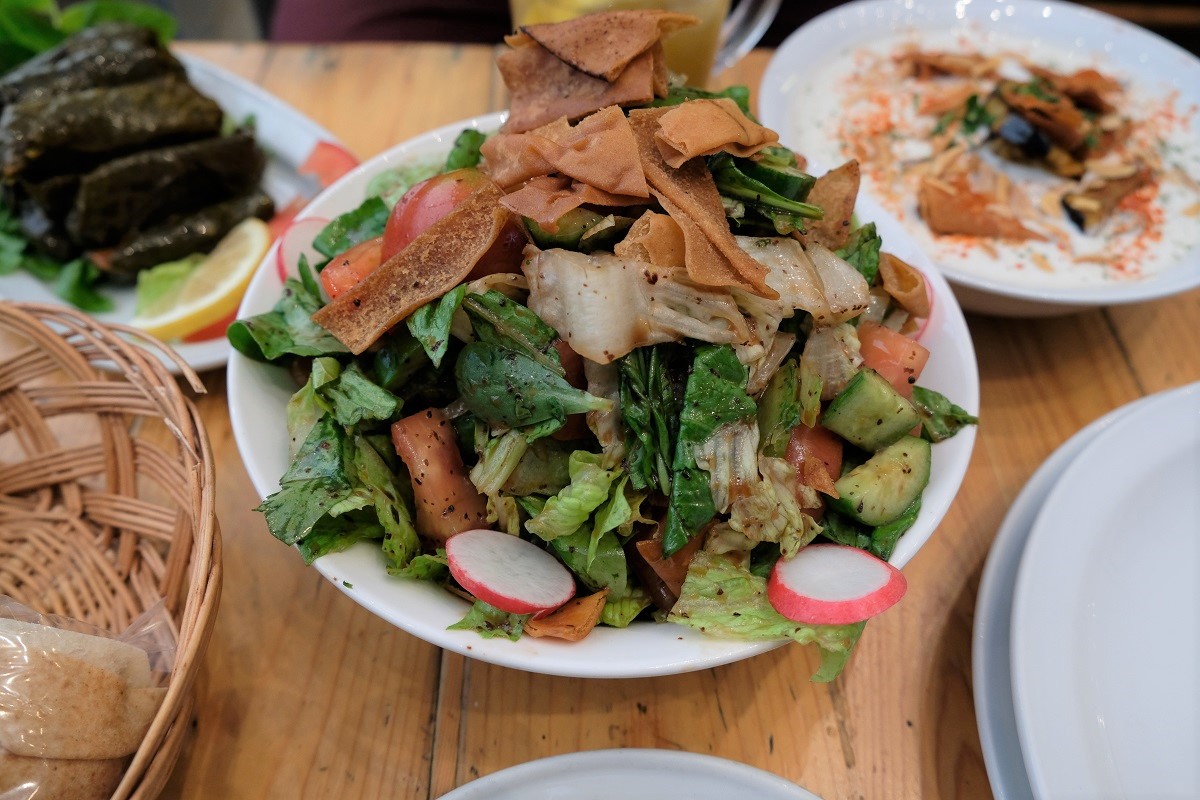


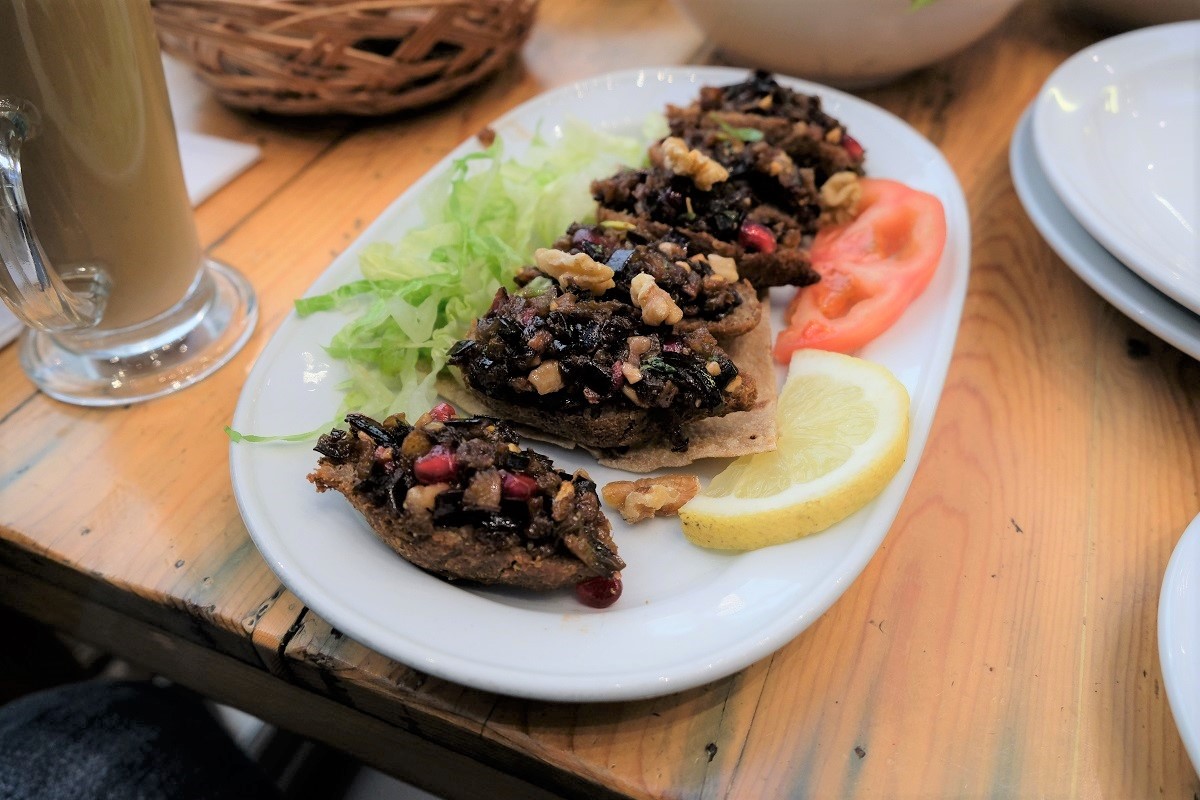

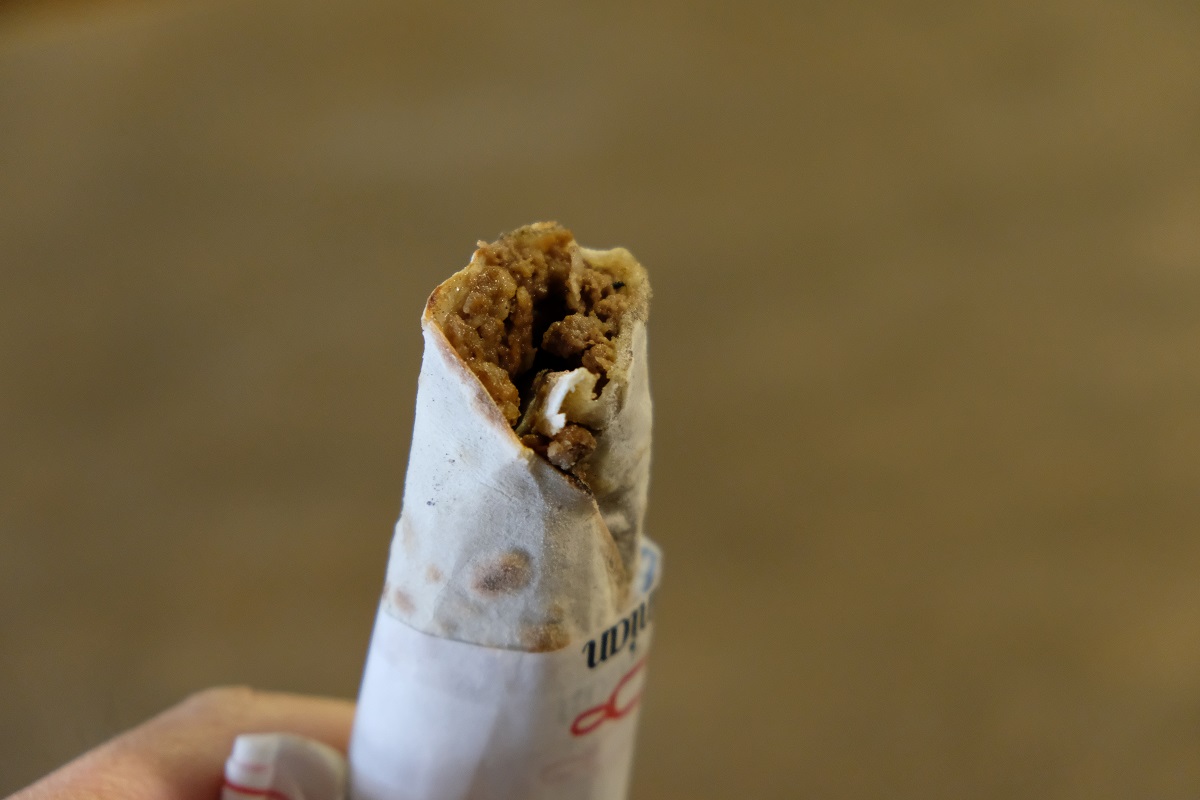
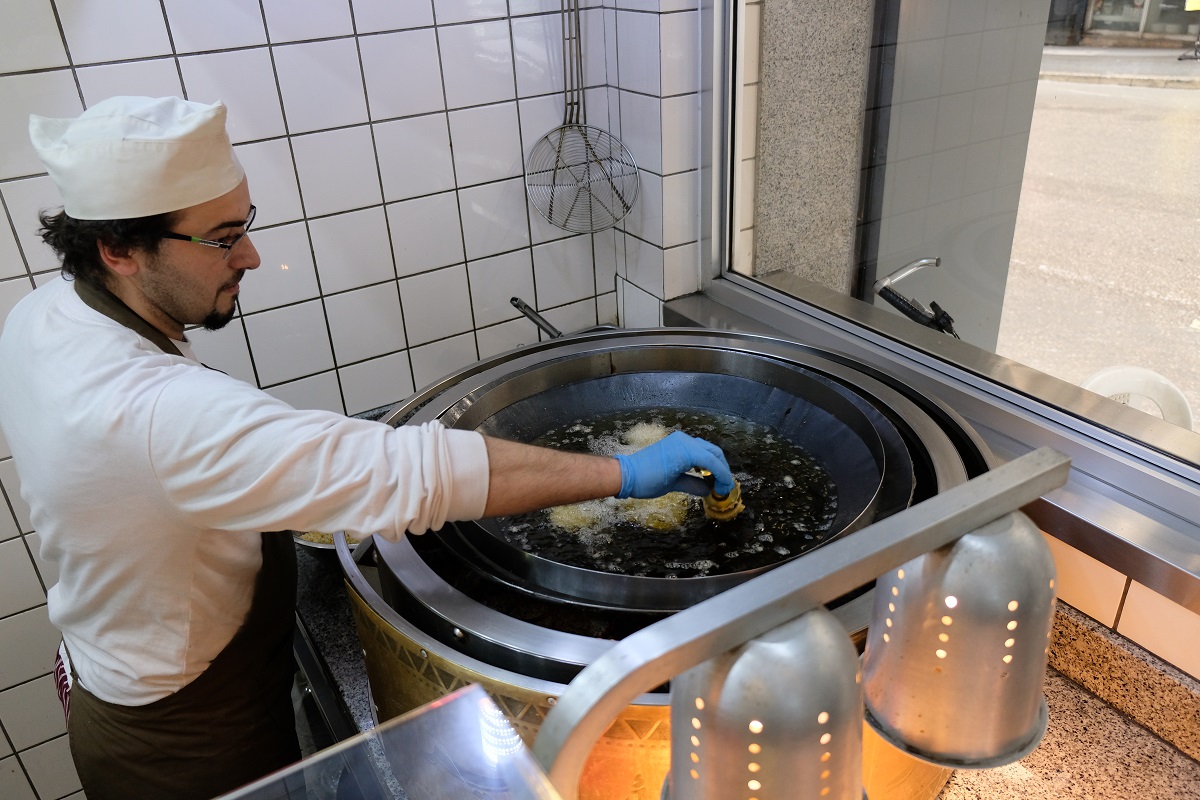
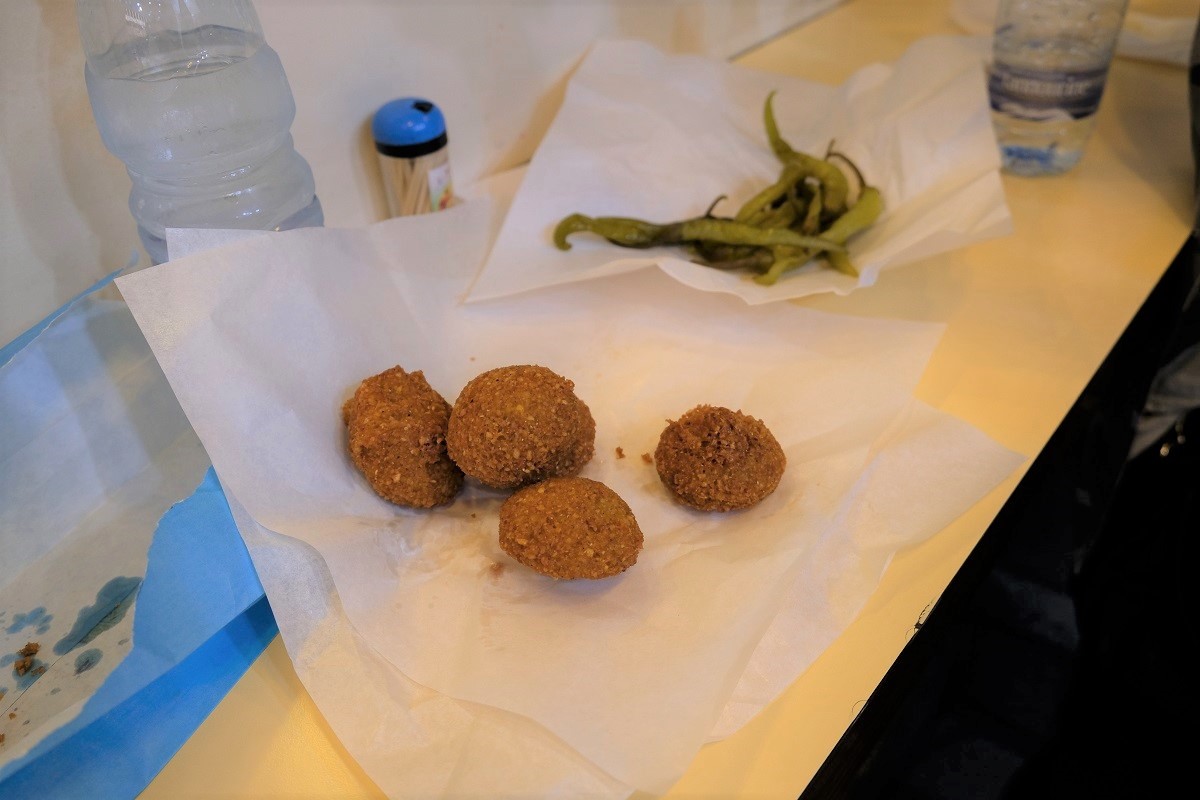
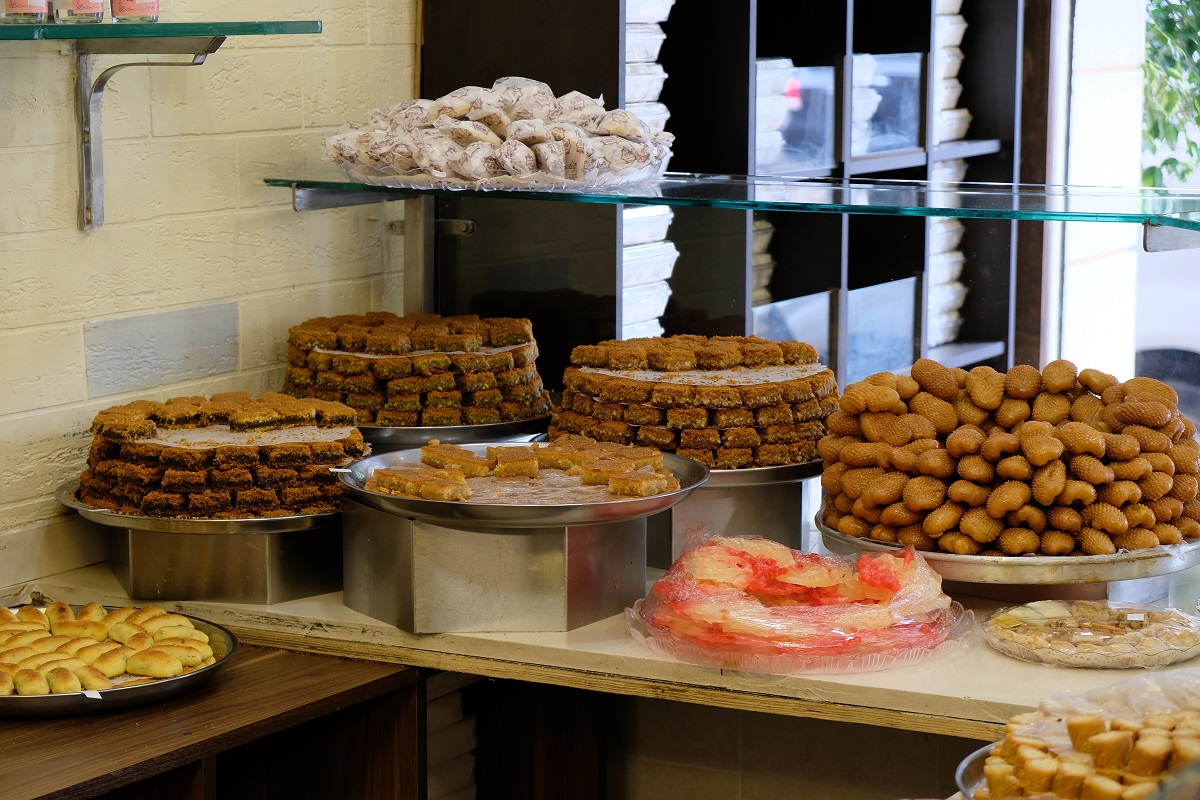


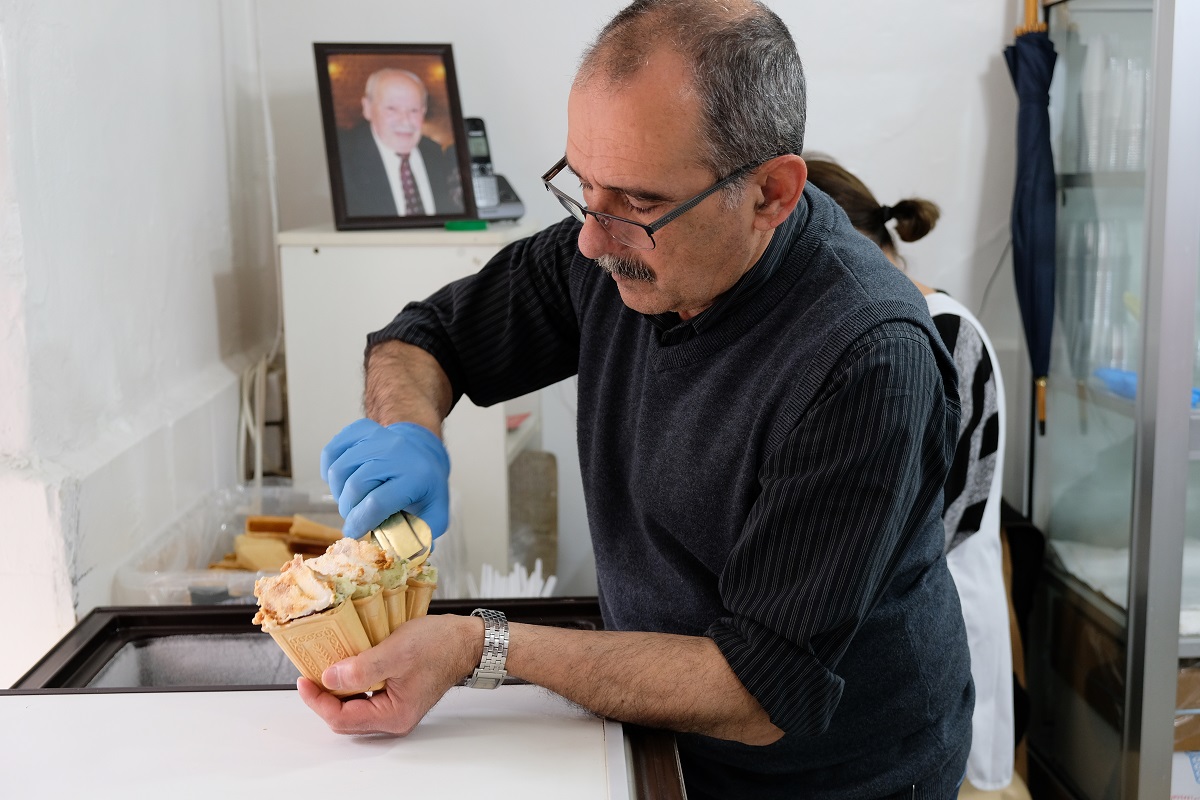



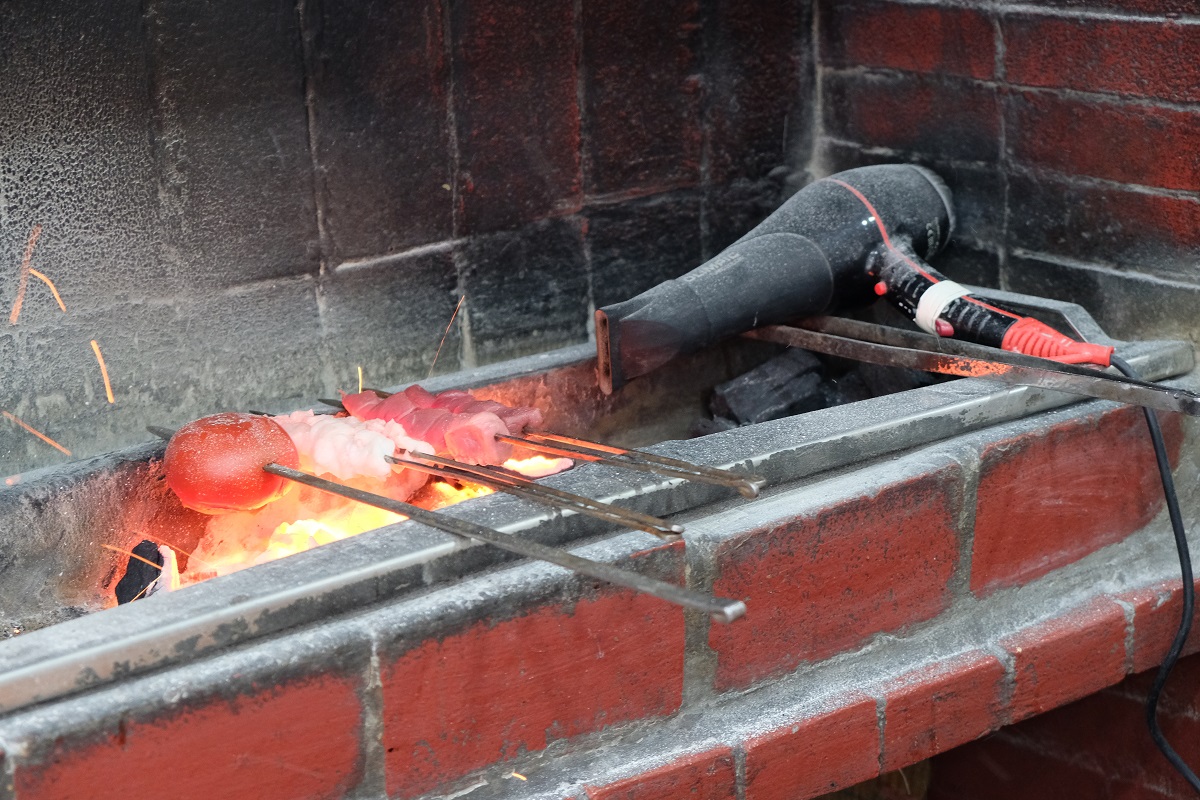




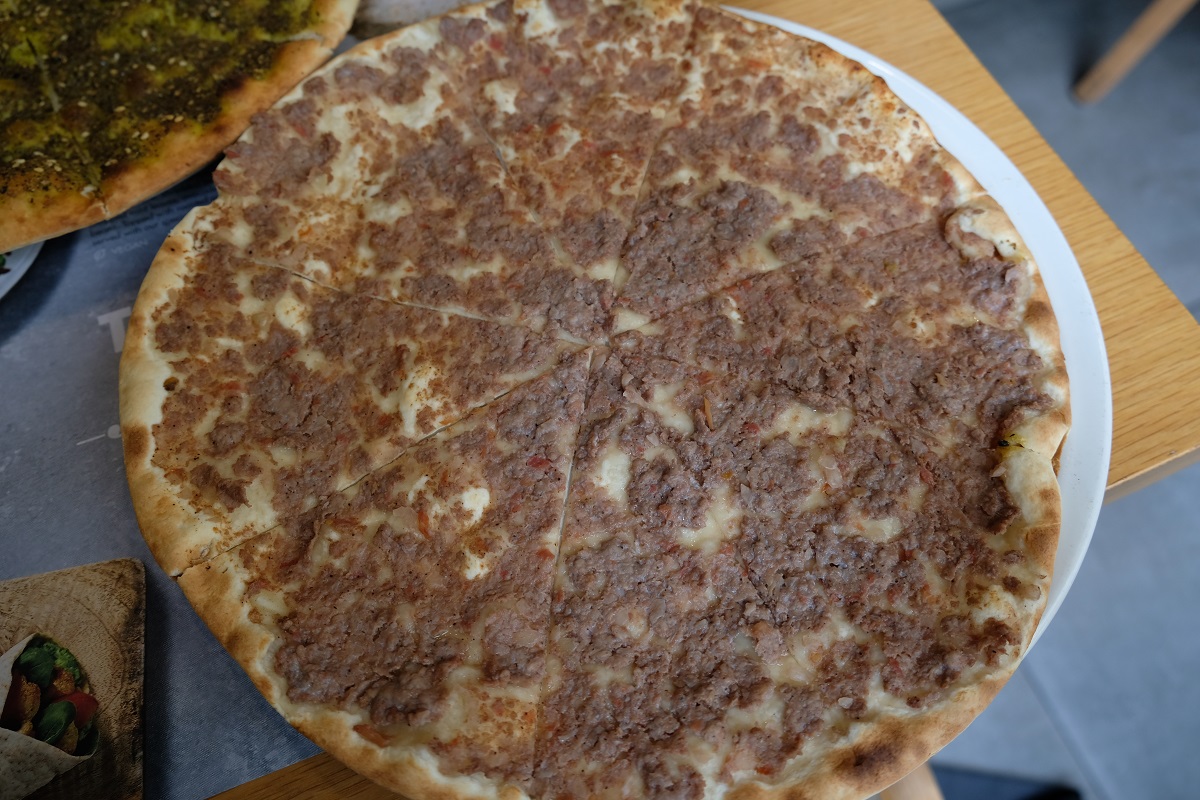

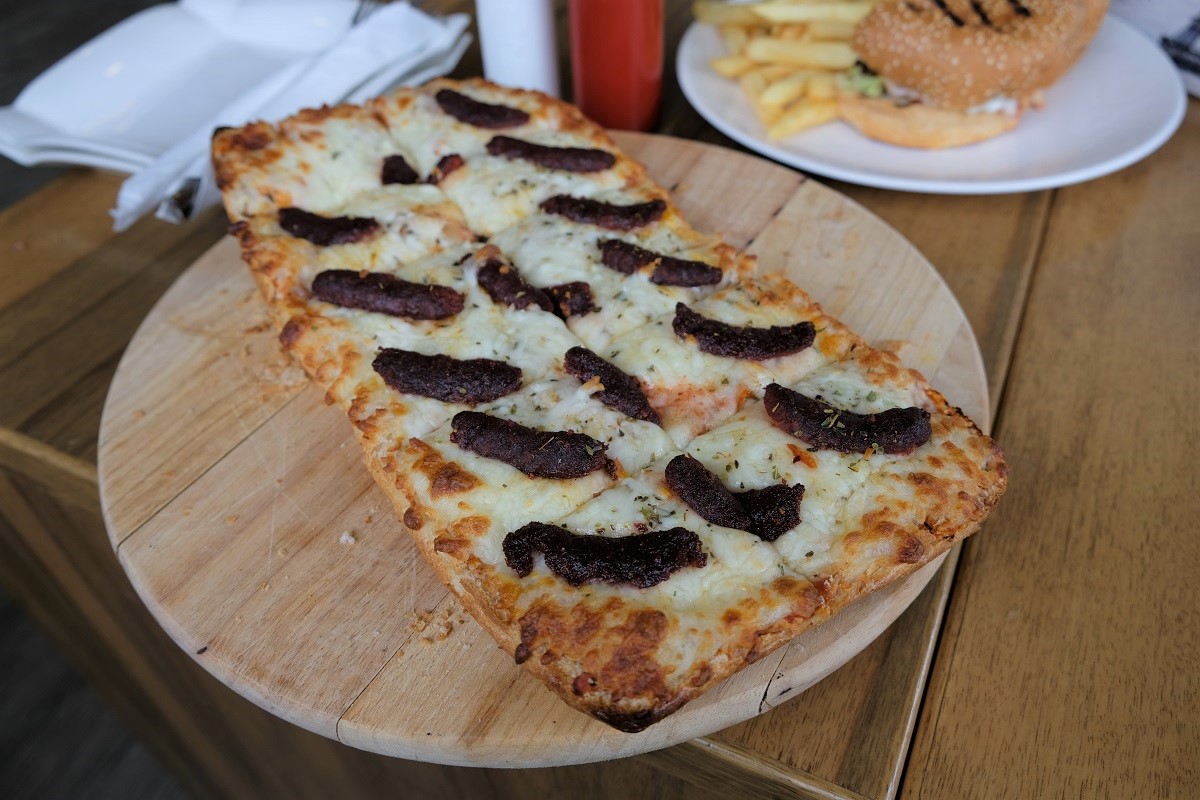
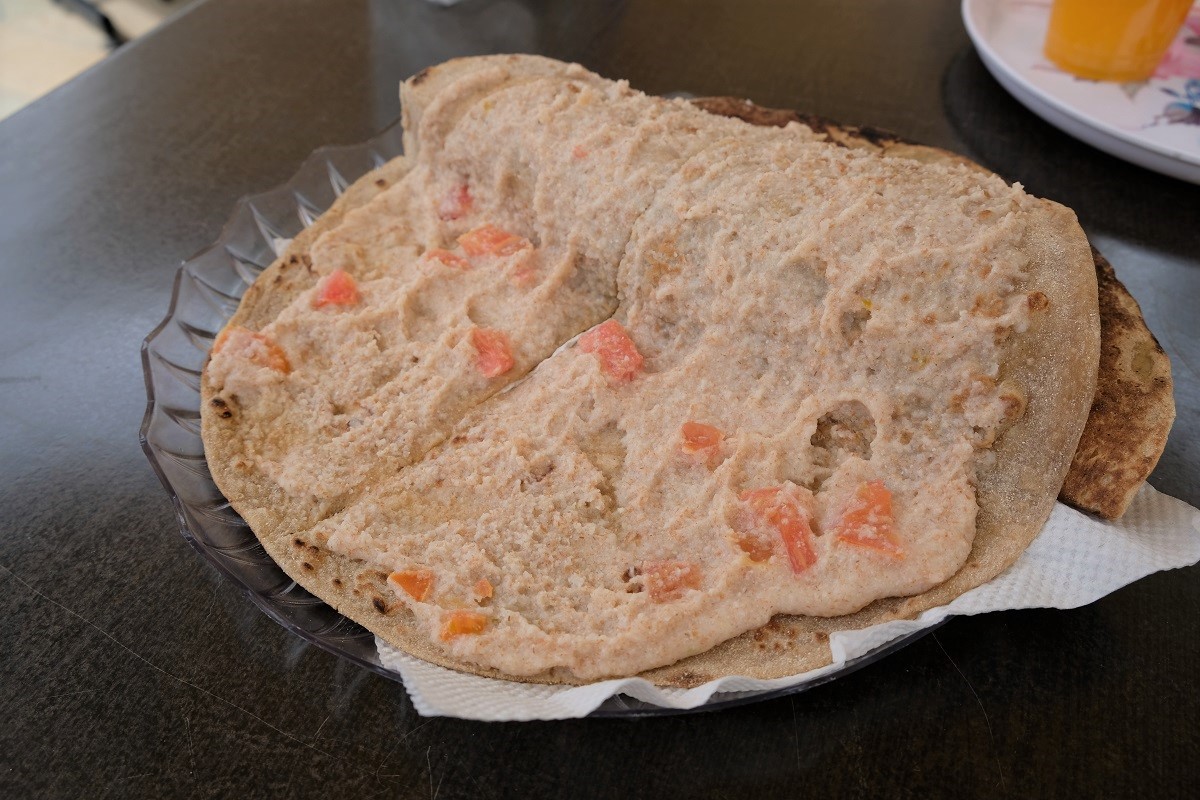
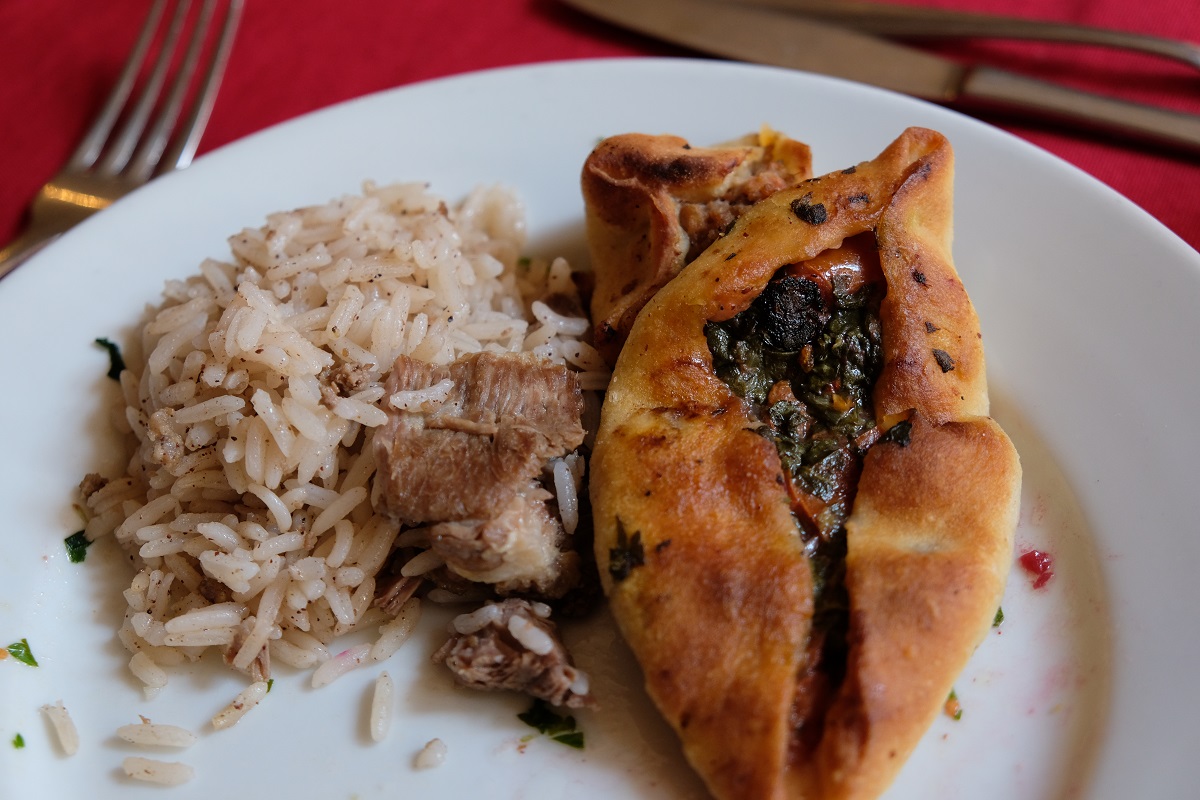

Ahhh you’ve got me craving food from Jordan now! I was in Aqaba this time last year, enjoying beautiful food by the sea. How things have changed in a year! Your post has me salivating for Hashem in Amman…. Gosh their hummus was the best!
LikeLiked by 2 people
As I was choosing the photos for my next post on Jordanian food, I kept thinking how good everything was. Hashem was the first place I went to in Amman, and I remember being a little perplexed finding out how things worked. But fortunately in the end the food was good.
LikeLike
Hahah yes we had no idea what or how to order. We just asked for enough food for two of us to try…. Got sooooo much we took a lot of back to the hotel to snack on later!
LikeLiked by 1 person
That’s so true. Part of the fun was figuring out how to order the food. 😀
LikeLiked by 1 person
YUM! Great photos. The hair dryer is a new one for us! Cheers!
LikeLiked by 1 person
Thanks! She probably uses it for convenience, but that’s what makes this place unique.
LikeLike
This all looks yummy! Reminds me of much of the food we ate in Turkey. In fact, lamachun was a favorite there– although I’ve never seen it rolled up before, it was always served open face, like a pizza.
Thanks for sharing!
LikeLiked by 1 person
I also tried lahmacun in Istanbul, but for some reason I didn’t like it. Maybe I went to the wrong place, because from what I read it looks like most people really like it.
LikeLiked by 2 people
The key to good lamachun, I think, is fresh lamb and not mutton. Bad lamachun is really bad, and some lamachun is mediocre but has that distinct mutton smell which is a no go. Here in the States, I’ve been to a few restaurants that serve it very heavy on the meat- where I think it’s better with just a bit of meat and lots of fresh herbs, onion, and lemon.
LikeLiked by 1 person
That’s right! The one I tried in Istanbul had this ‘smell’ which was not really nice. I’m usually fine with mutton smell, but that was quite unbearable. I’m open to give this flatbread another try, though, and hopefully next time I’ll be luckier.
LikeLike
This post brought back memories of my regular visits to a tiny Lebanese restaurant in South Brisbane where the chef even bottled their own olives that tasted like heaven.
LikeLiked by 1 person
Our fondest memories of food often come from small restaurants like this, where the owners are so passionate for what they’re doing and the components of the food are produced slowly and in small quantity.
LikeLiked by 1 person
The stuffed leaves are probably the one and only thing I don’t remember fondly. Maybe it’s because I completely, shamelessly pigged out on them and basically overdosed on ‘em. Whereas I have fond memories of Barbar over in Hamra. London has remarkably shitty kebab and shwarma, that place was a godsend. Really jealous about your Armenian finds, we either didn’t look enough or didn’t persevere enough… but we discovered Medovik, the Russian honey cake, there and even I who don’t like sweets had to admit it delicious!
LikeLiked by 1 person
I really wonder why we didn’t grab a snack or two at Barbar before starting the walking tour. If you get the chance to return to Beirut (after Covid-19 and when Lebanon’s economy has rebounded), head to Bourj Hammoud. That’s where you’ll find a lot of Armenian dishes. As an Indonesian, I really appreciate the fact that Armenians also play around with spices in their food. I had to google medovik just now, and it looks like something I would love.
LikeLiked by 1 person
Wow… you’re making me hungry not just for the food but to travel. Both you and James write so well. I appreciate all the work that went into writing this entry. Thank you.
LikeLiked by 1 person
Writing this post really made me miss traveling, exploring new countries and trying local delicacies. Thank you, Matt! These days I don’t write as often as I did a year ago. On one hand, it gives me more time to do other things. But on the other hand, I do miss writing and sharing my travel experiences.
LikeLike
It’s a good thing I just had breakfast, Bama! I love Lebanese cuisine – something that is quite prolific in the UAE. I buy my za’ater mix and labneh from a small pop-up Lebanese stand, which is the best I’ve ever tasted. Luckily I have a good amount of za’ater stocked up, as I have no idea when they will be able to do business the way they used to, because of the pandemic. I love food tours, as they give one a quick in-depth insight into a country’s cuisine.
LikeLiked by 1 person
Oh I also bought a lot of za’atar from my latest trip to the Middle East last October, and I still have some today. I must admit, when I first started traveling, I wasn’t too adventurous with foreign food. I would try some, but most of the time I chose something that didn’t look or sound too weird. Luckily now that has changed, and I’m forever grateful since food really is a window to other cultures.
LikeLike
I completely agree that food is a wonderful window into other cultures. I’m not an adventurous eater at all, and on top of that is a vegetarian. That is why I love Lebanese food so much, as there is an excellent variety of vegetarian fair. Glad you stocked up on some za’atar.
LikeLiked by 1 person
The pictures of the Lebanese food look delicious, my favorite ones are the ones with the Lebanese ice cream, I’ve never seen ice cream served like that, it looks so good!
LikeLiked by 1 person
That ice cream did taste as good as it looks! I loved how he layered up those different notes and colors — it started with refreshing rose water, then the sweetness of all those different fruits, and toward the end, more intense and rich flavors.
LikeLiked by 1 person
Yum! Yum! Yum!
I haven’t yet been to Lebanon but I really like Middle Eastern food and your photographs are fantastic.
‘Love it!
LikeLiked by 1 person
What are your favorite Middle Eastern dishes? Maybe they can give me an inspiration of where to go once this pandemic is over. 🙂 Thanks Victoria!
LikeLike
Love this! Great foodie inspiration!
LikeLiked by 1 person
Thank you for dropping by! Glad you feel inspired.
LikeLike
Great description and wonderful photos. I’m really regretting that missed trip to the Levant in March. I still have hopes of making it some time in the next two years.
LikeLiked by 1 person
At least you’re safe. And from other people’s experiences, it sounds like traveling just before countries began closing their borders due to the pandemic was somewhat eerie and surreal. Hopefully, these crazy times end soon, so we can travel again.
LikeLiked by 1 person
Yes, I know. It’s not the cancellation which I rue as much as the fact that it may be a long time before I can do it again.
LikeLiked by 1 person
Very true.
LikeLiked by 1 person
Lebanese food might be one of my all-time favorites. Growing up, international cuisine was not nearly as pervasive as it is now (especially in the provincial part of the country I lived in), but my parents used to take us to a Lebanese place as a special treat, and we all adored the “exotic” food.
I can’t help but think about the terrible explosion that rocked Beirut yesterday and how sad that is for them amid all their other difficulties lately. 😦
LikeLiked by 1 person
I remember having a lot of vegetables in Lebanon, which made me feel really healthy throughout my stay in the country. I think my mom would also love the dishes there — except for the raw meat, I guess.
Just before I started working yesterday, I read about the news and I was completely shocked and deeply saddened by what happened to a city which from my trip last year was such a fascinating place. This couldn’t be a more terrible time for something like this to happen. Then I looked up my post on Beirut and thought that most of the buildings I took photos of must have been damaged now. I really hope Beirut and Lebanon can come out of this catastrophe.
LikeLiked by 1 person
Membaca postingan ini setelah kejadian ledakan di pelabuhan di Beirut kemaren.. Fakta bahwa pengelola bisnis kuliner yang dirangkum di sini bisa jadi terkena imbas ledakan kemaren terasa cukup menyedihkan (beberapa mungkin ada yang lokasinya agak jauh dari Port ya? Tapi tetap terpengaruh sih pastinya). Seolah-olah Lebanon masih butuh cobaan tambahan selain krisis ekonomi dan politik yang tiada henti.
Ngomong-ngomong kayanya tipikal makanan di Timur Tengah rada-rada mirip ya, paduan daging, herbs, sayur segar, dan roti tepung/gandum. Dari sekian menu yang dicoba ini, menurut mas Bama mana yang paling distinct rasanya? Yang paling ga mirip dari tipikal makanan Timur tengah gitu.
LikeLiked by 1 person
Betul banget. Jantung saya kayak copot pas baca berita kemarin, dan ditambah video-video yang diambil warga Beirut yang menunjukkan detik-detik gelombang kejut ledakan itu menghantam kaca-kaca dan bangunan-bangunan seantero kota. Di foto-foto yang saya lihat dari media luar negeri, banyak sekali jalan-jalan dan sudut-sudut Beirut yang saya kenali karena bulan Maret tahun kemarin kebetulan saya mengeksplor daerah-daerah itu. Sedih sekali melihat kenyataan bahwa banyak bangunan yang hancur dan tidak sedikit nyawa yang melayang.
Kalau di Indonesia, makanan Timur Tengah yang lebih familier dengan lidah kita mungkin sejenis nasi kebuli, dan nasi-nasian lainnya dengan daging ya. Kalau di Lebanon paling mencolok itu banyak sayuran sih. Saya berasa sehat banget setiap hari makan sayur segar di sana. Ada beberapa makanan Lebanon yang unik, misalnya daging domba mentah yang dicincang halus dan dicampur herbs. Yang unik lagi dan sepertinya khas Lebanon ya itu, makanan komunitas Armenia di Lebanon. Saya penasaran sih membandingkan gimana beda/persamaannya dibanding makanan Armenia di negara asalnya.
LikeLiked by 1 person
Beneran serem sih, terutama gelombang kejutnya itu. Yang ngerekam dari jarak cukup jauh aja masih kebanting. Pertama kali liat video-video rekamannya kepikiran jangan-jangan nuklir atau semacamnya, semoga engga.
Pasti ngerasa gimana gitu ya, ngeliat lokasi-lokasi yang pernah didatangi (apalagi baru tahun lalu) tahu-tahu terkena tragedi begini. Semoga ga kejadian yang aneh-aneh lagi sih, soalnya habis ledakan di Beirut ini langsung ada kebakaran besar banget juga di Ajman UAE. Semoga ga berhubungan.
Menarik juga, di negara yang relatif ‘kurang subur’ gitu tanahnya (dibanding Indonesia setidaknya) ternyata sayurannya segar-segar. Penasaran juga sama teknologi pertaniannya, bisa jadi mengadopsi kecanggihan teknologi pangan dan pertanian Israel juga ya.
Saya belum kebayang gimana rasanya daging domba mentah, tapi mestinya herbsnya cukup banyak komposisinya biar dagingnya ga terlalu kerasa mentah ya.
LikeLiked by 1 person
Yang saya baca dari berita, sebagian orang di Beirut lebih bisa “memaklumi” ledakan-ledakan pas dulu Lebanon masih masa perang saudara. Kalau ledakan kali ini bener-bener disebabkan faktor kelalaian dan tidak berfungsinya sistem kontrol di sana dengan baik, jadi orang-orang lebih marah.
Wah kalau sampai mengadopsi teknologi dari Israel saya kurang tahu juga, dan sepertinya unlikely sih karena Israel ini musuh bebuyutannya Lebanon. Tapi bisa juga sih teknologi ini masuk ke Lebanon melalui negara ketiga. Entahlah. Yang pasti, waktu saya ke desa-desa dan kota-kota di luar Beirut, memang terlihat negara ini cukup subur dan banyak sungai mengalir.
Daging domba mentah yang saya coba sih gak ada bau domba, bau amis, atau bau-bauan gak enak sama sekali sih. Mungkin selain dari herbs, kualitas dagingnya juga gak sembarangan.
LikeLiked by 1 person
“… sebagian orang di Beirut lebih bisa “memaklumi” ledakan-ledakan..”
Ironis sekali ya sebenernya kondisi begitu. Semoga ini beneran murni kelalaian teknis sih, jadi penanggungjawabnya bisa ditindak dengan lebih tegas. Kalau ada bumbu-bumbu politik dan militernya lagi makin nelangsa itu penduduk Beirut.
Berarti ga tandus-tandus amat juga ya kondisi alamnya. Kirain kering kerontang banget gitu.
Kirain amis ya, soalnya kan mentah. Keren juga berarti teknik masaknya. Mungkin mirip sama kita waktu masak daging kambing ya. Ada yang jago ngolahnya jadi ga bau sama sekali. Kalau yang ga biasa masaknya kan daging kambingnya cenderung berbau.
Thanks infonya, Mas.
LikeLiked by 1 person
Semoga sih. Dan menurut saya karena rakyat Lebanon sudah sangat gak percaya dengan pemerintahnya sendiri, ada baiknya penyelidikan kasus ledakan ini melibatkan lembaga-lembaga independen internasional juga.
Lebanon memang tanahnya gak seperti bayangan banyak orang tentang Timur Tengah sih. Subur, hijau, dan di daerah pegunungannya bersalju!
LikeLiked by 1 person
Semoga ga ada penolakan bantuan asing dari pemerintah dalam negerinya ya. Kemaren baca berita, evakuasi yang dibantu tim dari spanyol dan belanda harus ditunda cukup lama karena otoritas di beirut katanya ga mengijinkan anjing pelacak menaiki kendaraan yang sama. Ada-ada aja, hehe.
LikeLiked by 1 person
Ya begitulah di sana. Selama seminggu saya di sana, hampir setiap orang cerita betapa korupnya pemerintah mereka, dan betapa mereka benci kelompok elit politikus di sana.
LikeLiked by 1 person
Oh now to do this food your now. Food is such a huge part of the experience of new places and cultures. It’s so amazing how peop,e have evolved such distinct cuisines over time. (On a side note, I am wondering how many disposable gloves enter the ocean everyday from restaurants)…
LikeLiked by 1 person
Yes, and I regret for not realizing this in my early years of traveling. When I went to Cambodia in 2011, for example, I didn’t try as many Khmer food as I would now if I get the chance to go back there.
As for the plastic waste contaminating our oceans, I think due to Covid-19 (as many people use disposable face masks) things are getting worse now.
LikeLike
Bama like Lexie I read through your posts and couldn’t help but think of what may have happened to these places and people. Do you have any idea? The food looks extraordinary. What a gift that you visited when you did.
LikeLiked by 1 person
Our friend’s apartment in western part of Beirut, about 3 kilometers away from the explosion, was partially damaged — the glass window of his living room was shattered. I can only imagine how much worse the situation must be for those who live closer to the blast. I also remember vividly some of the places we went to in areas of Beirut which according to the photos I’ve seen are now completely destroyed.
LikeLike
I’m hungry now after reading your post. And after reading previous comment, I’m glad to see that your friend is Ok.
LikeLiked by 2 people
Maybe I should have warned people not to read this post on an empty stomach. 🙂 My friend lives in western Beirut, and today I learned that the now destroyed silo at the city’s port actually prevented even more severe damage to this part of the Lebanese capital.
LikeLike
Wonderful review of Lebanese cuisine! You definitely have the talents to be a food writer. I agree that the Levant is one of the world’s best areas for cuisine, even for a vegetarian like me.
LikeLiked by 1 person
You’re too kind, Henry. Thank you! You must have really enjoyed all those salads in Lebanon. Even the olive oil I bought in Lebanon is better than the one I usually buy here in Jakarta (which is imported from Italy). It is smooth and subtle, but with a slightly spicy aftertaste, which I really like.
LikeLike
I just got back from a week of kayaking without any access to news. I was shocked to learn about the explosion in Beirut…so sad. This region certainly has had its unfair share of tragedy. Your post though lifted my spirits as I love Middle Eastern food and we have quite a good selection here in Vancouver. Aren’t food tours the best? Such a great way to explore a city, connect with locals and sample authentic dishes. Your food photography is wonderful.
LikeLiked by 1 person
It’s so sad indeed that a country as beautiful as Lebanon has endured so much hardship. I really hope the August 4 explosion will bring much-needed reforms to this country, although maybe even that is rather a wishful thinking.
Unfortunately it’s quite hard to find Lebanese restaurant here in Jakarta — there’s one, but the reviews make me think twice. Thanks Caroline! A week of kayaking sounds really nice. Eleven or twelve years ago, I tried canoeing for the first time and I really loved it, although I ended up having sunburn all over my face.
LikeLiked by 2 people
Sunburn is common with these water activities. In addition to restrictions limiting participation to friend/family pods, the company we toured with took exceptional care with respect to COVID-19 precautions. One was supplying us all with buffs that we needed to wear while around the guides. They doubled as really great sun protection for our necks/faces.
LikeLiked by 1 person
Another amazing travel experience for you and James. This trip to the Levant in Lebanon sounds like a one in a life time experience. I have never heard of lahmadjun, and looking at the photo you shared, it looks a bit like a burrito. That is amazing you came across that diner on Armenia Street cooking with a hairdryer – and you got a great shot to prove it. I am sure you enjoyed watching the elderly Amernian woman cook with it 😀 That is quite a few zaatars you had…and I am sure you ate as much as you can 🙂
LikeLiked by 1 person
It really was! I hope I can return one day to explore more places in the country. I can see why you immediately thought of a burrito when you saw that photo of a lahmadjun, because both look cylindrical. But the similarity ends there. I wonder if there is any Armenian restaurant in Melbourne (but even if it does exist, most likely it is closed now due to the lockdown) so you can try this type of flatbread. I still remember how good the meat was at that Armenian lady’s place. I wonder how much damage last week’s explosion caused to this joint. 😦
The truth is, most of the time we ate a little too much because we wanted to try as many new dishes as possible. 🙂
LikeLike
Maybe the place is still okay over there. I am not sure if there is an Armenian restaurant in Melbourne. But I do know there are quite a few Middle Eastern food places. You’ll have to come back here to explore at some point 🙂
LikeLiked by 1 person
I really hope that is the case. I know I’ll have to return to Melbourne. Some people recommended us a few restaurants in Footscray, but we didn’t get the chance to go there.
LikeLike
Footscray is a foodie destination. You can find Ethiopian, Indian and Malaysian foods there 🙂
LikeLiked by 1 person
Speaking of Ethiopian food, I went to Saba’s, a small restaurant on Brunswick Street. That was my first time trying dishes from this African country and oh my! Everything was so delicious! That lunch really made me think of going to Ethiopia sometime in the future.
LikeLiked by 1 person
Beautifully written. It was like we was there with you. What an adventure for you both. One day I shall visit and get to taste and enjoy all those mouth watering foods you showed us. I’m glad to know your safe from the recent disturbances though.
LikeLike
Thank you, Kareen. This food tour was among the best things we did in Lebanon. I hope one day, when this beautiful country is open again and a sense of normalcy returns, you’ll get the chance to go there and taste all those delicious dishes.
LikeLike
Hi Bama, I hope your having a good week so far? You certainly gave us a hunger for travelling. When I can I will visit, because it’s my mother-in laws country and she wants us to see her home and it’s beauty.
LikeLiked by 1 person
It’s been a busy week, but I’m not complaining. 🙂 A trip to Lebanon with your mother-in-law would be great! We’ll always see more when exploring a place with someone who knows it like the back of his/her hand.
LikeLike
Saya mendadak lapaaaarrrrr melihat postingan ini mas Bama! 😀 😀 😀
Meskipun saya agak-agak picky, tetapi pas liat ini kok tertarik buat nyoba ya. Seperti pas di Jerusalem atau Jordan, aku cukup bisa tuh makan makanan Timur Tengah dan enaaak juga. Mungkin karena lapar ya… jadi tutup mata dengan segala jenis daging yang ada di dalamnya 😀 😀 😀
Coba terus buat postingan soal kuliner supaya saya jadi mau makan yang ajaib-ajaib tapi enak ini hihihihi
LikeLiked by 1 person
Sayangnya gak bisa nyomot makanan dari layar laptop/gadget ya mbak, hehe. Kalau salad2an Mbak Riyanti suka gak? Soalnya salad di sana itu fresh dan rasanya bener2 menyegarkan. Dan kalau suka sama minyak zaitun, wah udah deh. Di sana surganya. Postingan berikutnya tentang makanan Yordania mbak. Mungkin saya postingnya di awal September.
LikeLike
Aku tunggu yang Jordan deh… salad??? Sukaaaaaa…..
LikeLiked by 1 person
Bama, as you know, I loved everything about the food in Lebanon. I did not once miss eating rice and was thrilled to be having bread every day for breakfast, lunch, and dinner. A few personal highlights for me were the sublime baba ghanoush with caramelized onions and walnuts drizzled in pomegranate molasses we enjoyed at Meyzan (and that gorgeous beetroot hummus); the Lebanese-Armenian dinner that capped off our full-day food tour; the piping-hot lahmadjun at Ichkanian; and the sujuk pizza at our cozy hotel in Al Arz. I’ll never forget how blissful it was to eat that pizza in a warm lounge (with the snow piled up against the windows) while sinking into padded seats near a crackling wood fire.
LikeLiked by 1 person
And I didn’t miss eating noodles! I really wish I’d taken photos of the dishes we had in Bourj Hammoud, because I remember everything was so good. And I wouldn’t have minded returning to Ichkanian, if only it was closer to our hotel. Lebanon was such a great travel destination. The heritage sites were amazing, the cultural sights impressive, the natural landscape spectacular, and the food! Oh so good. It’s really sad and heartbreaking to see all the struggles this beautiful country is currently facing. I hope things will improve real soon there.
LikeLiked by 1 person
Your post with the gorgeous descriptions of all the food and the luscious photos, has absolutely got my mouth watering. I love Lebanese food, the flavors and focus on freshness is always great. There is some overlap I think with Israeli dishes and Turkish food, and then some that are just pure Lebanese. I think Oman is top of our list, but now I am reconsidering… based on the food alone. Great post.
Peta
LikeLiked by 1 person
While Lebanon really is a great destination, it’s been dealing with one crisis after another since the end of last year. First, an economic crisis, then Covid-19, now also political crisis following the August 4th blast. I hope when the world is ready to embrace tourism again, the situation in Lebanon will be much better than how it is today, so you can enjoy the country at its best. Thanks Peta, and stay safe!
LikeLike
Pingback: A Taste of the Levant: Jordan | What an Amazing World!
Wonderful review of this great and famous cuisine! Make me hungry… :)! Bye. Kamila
LikeLiked by 1 person
Thank you, Kamila. I hope you didn’t read this on an empty stomach. 🙂
LikeLiked by 1 person
What kind of camera did you use?
LikeLiked by 1 person
Hi there. I’ve been using Fujifilm XT-20 since end of 2018.
LikeLike
Hmmm,, this food levant is looking delicious. I love to see all of your photos here.
LikeLiked by 1 person
Unfortunately, most of those dishes are quite hard to find in Indonesia. We ate so well in Lebanon, and I was happy with the amount of vegetables we had throughout our stay. Thanks for dropping by!
LikeLike
Pingback: Exploring the World, Pandemic Style | What an Amazing World!
This might sound like sacrilege but my one Paris staple that I make a beeline for is shawarma from a tiny Lebanese Jewish joint in the Marais! And lahmacun is another favourite when in Turkey. Your delightfully delicious post doubles my desire to get to Lebanon Bama. Not sure if it”l happen with the way things are panning out with the pandemic as well as the situation in that country. Fingers crossed for whatever it’s worth.
LikeLiked by 1 person
Ahh Le Marais… I don’t know why I didn’t visit this part of Paris when I was in the city with my relatives 14 years ago. Speaking of lahmacun, for some reason I didn’t like the one I had in Istanbul. Either I went to the wrong place, or my palate wasn’t as adventurous as it is today. But I’d love to give it another try when I get to chance to return to this fascinating country one day in the future! I’ve been following the news from Lebanon since two years ago, and it’s really sad to see how things in this beautiful place only seem to get worse every day. Finally they got a new government, although the people are just fed up with the same political elites that have been running and ruining their beloved country for decades. But if they’re able to bring stability and much-needed economic relief, I think that’s good enough for now.
LikeLiked by 1 person